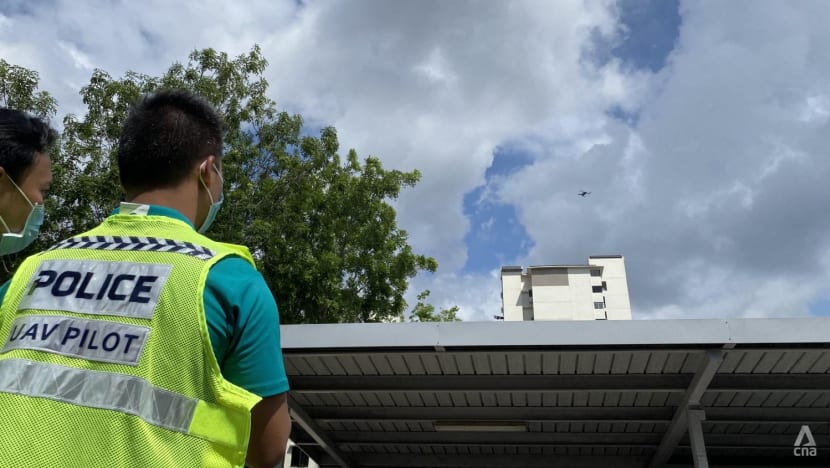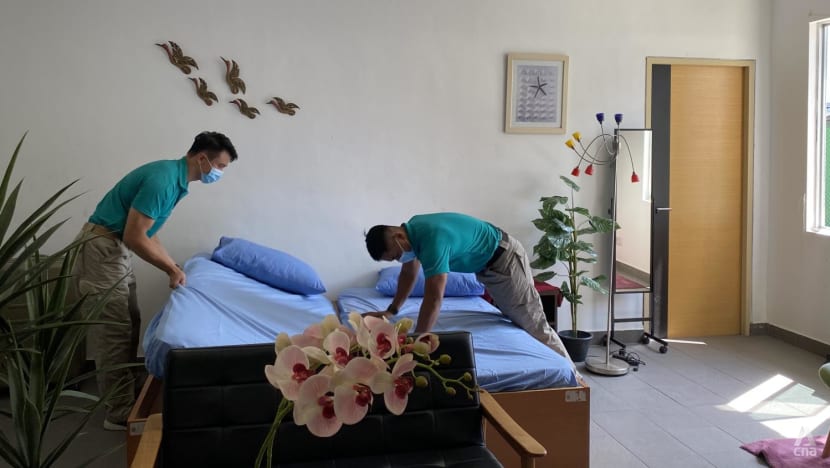From sewage systems to cable tunnels: Police use robotics to ensure safety at major events
Robotics help officers from the Police Security Command scan high-rise terrains as well as underground facilities.
SINGAPORE: From patting down pillowcases in hotel rooms to peering inside drains, officers from the Police Security Command (SecCom) step in before a major event and conduct search operations on venues.
Their task is straightforward: Look for explosive devices and other security threats that might endanger VIPs, guests and participants.
These search operations have been enhanced with the use of robotics since 2019, said the Singapore Police Force (SPF) and Home Team Science and Technology Agency (HTX) on Sunday (Jul 24).
“One of our core duties is to conduct search operations at major security events to ensure that there are no explosive devices or security threat items that will endanger VIPs, guests and participants. However, search operations can be dangerous and physically demanding,” said the Commanding Officer of Search Cadre Unit from SecCom, Deputy Superintendent of Police Winston Yim.
This is where unmanned aerial vehicles and remote-controlled vehicles come in, to “improve work efficiency while ensuring officers’ safety”, said SPF and HTX.
The deployment of these robots have enabled SecCom to more than halve the amount of time and manpower spent on search operations, as compared to physical searches done by officers, SPF told CNA.
"This also depends on other contributing factors that can affect the operation, such as the environment, operating terrain and the complexity of the search."


VISUAL SCANS WITH DRONES
When SecCom officers manually scan a high-rise terrain, such as rooftops and aboveground air-conditioning ducts, they face the risk of falling from height or encountering pest infestations, said SPF and HTX in a joint press release.
Unmanned aerial vehicles, commonly known as drones, address these “hazardous and challenging” working conditions and allow officers to conduct “real-time surveillance for any incriminating items or other suspicious abnormalities”.
“With the deployment of UAV technology, SecCom has been able to achieve higher operational efficiency and better provide for the safety of officers when performing such search operations on high-rise terrain,” said SPF and HTX.
MITIGATING RISKS OF GOING UNDERGROUND
Several challenges are also present at underground facilities such as rain and water drainages, telecommunication cable tunnels and sewage systems.
In those areas, SecCom officers face the risk of “pollutants or other harmful gases that have accumulated for long periods of time”.
They also have to “visually confirm the absence of any dangerous items”, said SPF and HTX.
Remote-controlled vehicles, however, allow officers to “reach less accessible areas underground”, where they might otherwise have difficulties entering.
Remote-controlled vehicles “provide SecCom officers with an up-close view through a centralised monitoring console, giving officers more confidence in their threat assessment process,” said SPF and HTX.


While SecCom’s internal robotics experts initially developed their own remote-controlled vehicle prototypes, they subsequently worked with HTX to improve the prototypes.
During search operational trials from 2019 to 2021, features such as communication range, agility of movement and imagery were improved, said SPF and HTX.
“Searching through underground facilities is a highly complex and risky affair,” said Dr Ng Gee Wah, director of Q Team Centre of Expertise at HTX.
“In the dark and damp environment, the risk of SecCom officers falling and sustaining injuries is real, on top of the danger of actually encountering an explosive device or any other security threat items.”
Understanding these challenges, HTX designed remote-controlled vehicles to “scan narrow subterranean spaces and provide the situational picture to officers who are situated at a safe location above the ground”, added Dr Ng.
The remote-controlled vehicles have so far been deployed for use at events such as the May Day Rally, the Shangri-la Dialogue, and the National Day Parade.















